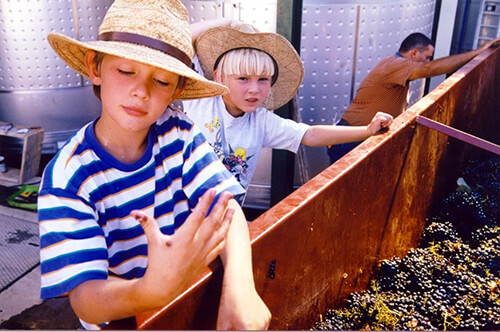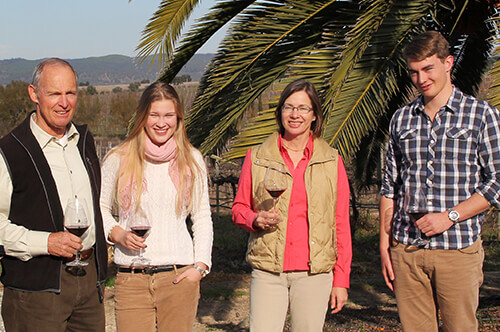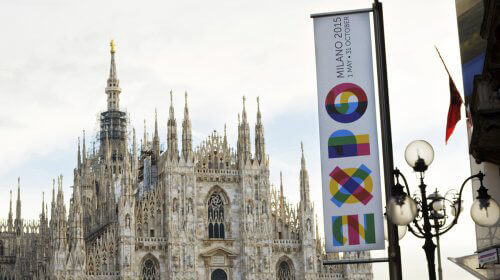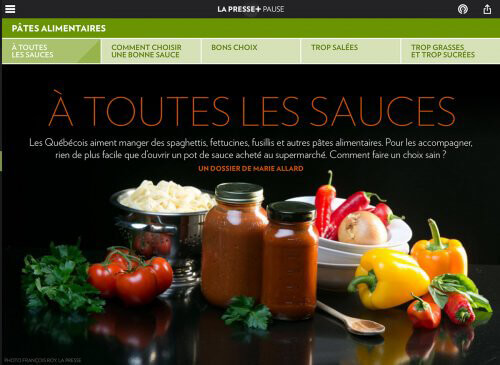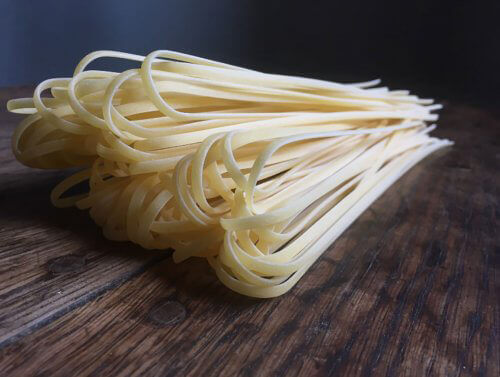It all began with a sailing adventure
The story behind Cortes de Cima’s prized wines and olive oil began with a trip on a sailboat. In 1888, aged 16, Francisco Correia Sarmento left the Azores and sailed to America. After coming to shore in Boston, he settled down in California’s Wild West and married an English immigrant. Three generations later, Carrie was born.
One hundred years after Francisco’s journey, another sailing adventure unfolded. Carrie met a Dane named Hans, who had been working for 20 years as an engineer for a palm oil operation in Malaysia. Together, they decided to trade their life in the tropics for a sailboat and to travel around Europe to find a place where they would start a family and plant a vineyard.
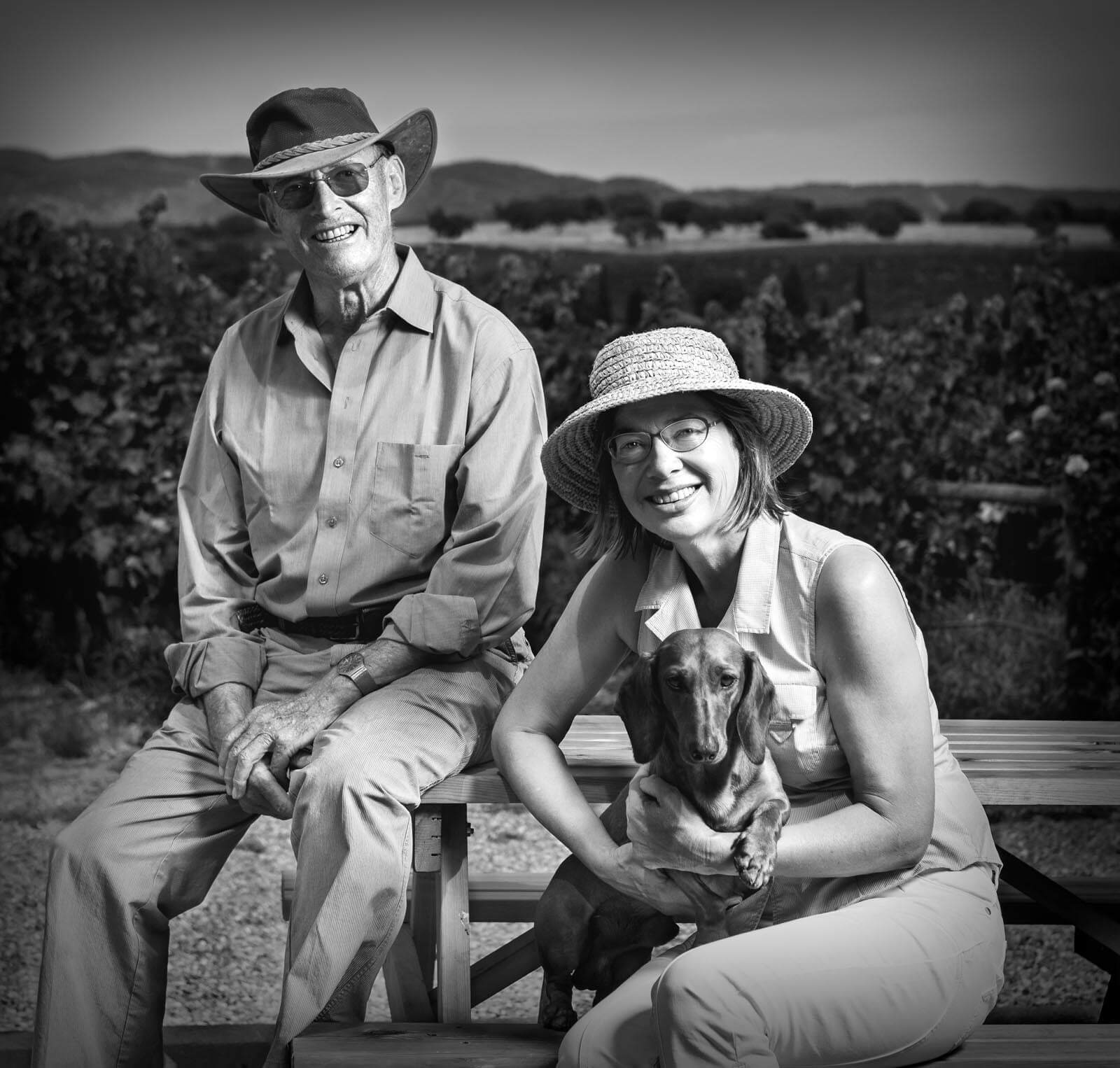 In 1988, their boat took them to Vidigueira, some 100 km inland from the rugged Atlantic coast. The rolling hills covered with oak trees reminded Carrie of her native California, while the nearby Serra do Mendro mountain range, 400 metres high, convinced Hans it was the perfect place for a vineyard. Long before, in 65 B.C., when Julius Caesar governed the Alentejo region from the city of Beha, the Romans had already discovered the land was ideal for growing vines and olive trees. In fact, the olive trees they planted in the region still bear fruit today!
In 1988, their boat took them to Vidigueira, some 100 km inland from the rugged Atlantic coast. The rolling hills covered with oak trees reminded Carrie of her native California, while the nearby Serra do Mendro mountain range, 400 metres high, convinced Hans it was the perfect place for a vineyard. Long before, in 65 B.C., when Julius Caesar governed the Alentejo region from the city of Beha, the Romans had already discovered the land was ideal for growing vines and olive trees. In fact, the olive trees they planted in the region still bear fruit today!
“Where olives can’t grow, a great wine is impossible to make.” – proverb
When Hans and Carrie acquired the property in 1988, Cortes de Cima was considered an average-sized estate for the Alentejo region with its 375 hectares of olive groves and dry arable land. They began by renovating the old monte (the white farm buildings set high up on the hill), had electricity installed and built their own dam for irrigation. Once the work was over, in 1991, they started to plant 50 hectares of vines and 50 hectares of olive trees. The first of their two children was born around the same time. It is typically necessary to wait at least five or six years after the vines are planted before the first bottles of wine intended for sale can be produced. To earn a living in the meantime, they became horticulturists, growing tomatoes, melons and broccoli for the produce market.
Wine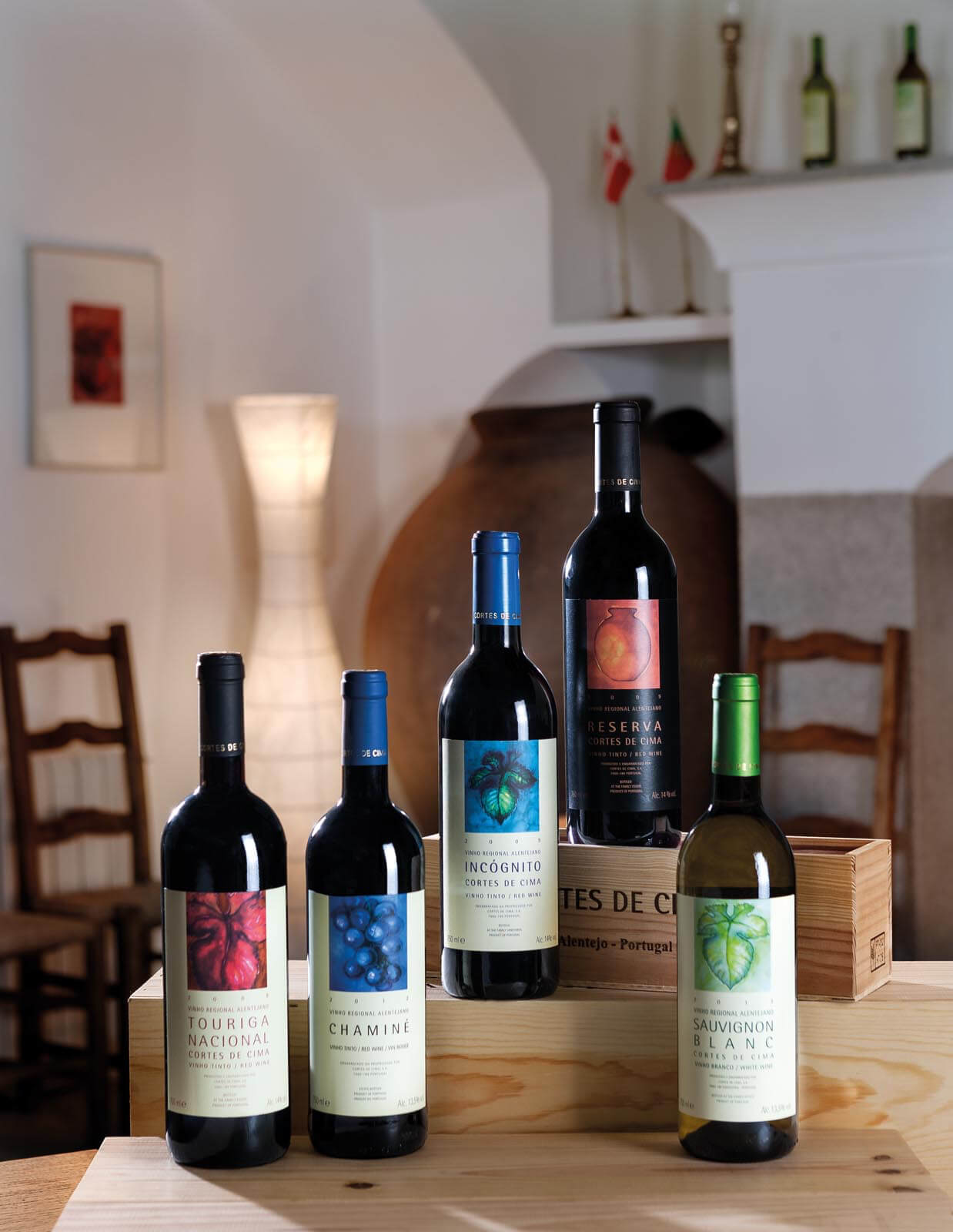
In 1996, Cortes de Cima’s first vintage – grown, produced and bottled on the family estate – made it to market. Local wine experts were scornful and openly criticized their winemaking methods. Regardless, Hans and Carrie decided to send wines from their first two vintages (1996 and 1997) to London’s International Wine Challenge in 1998 and had the last laugh, earning the highest honours for Portugal! Afterwards, their first syrah, Incógnito 1998, won a gold medal in Brussels. Before long, the Portuguese press was praising the vineyard, calling it “the latest discovery in wine production.” From that moment on, their reputation in Portugal was established, and Cortes de Cima’s wines, Chaminé and Incógnito, were well on their way to becoming the iconic brands they are today. The estate now counts 130 hectares of vines, mainly Aragonez, Syrah, Touriga Nacional, Trincadeira, Petit Verdot, Anton Vaz and Verdelho, but Hans, as passionate as ever, continues to experiment with new varieties.
Olive oil
In addition to winemaking, the Alentejo is one of the Iberian Peninsula’s main olive-growing regions. Hans and Carrie chose the Portuguese variety Cobrançosa, well suited to local conditions. As is the case for vineyards, olive groves are certified under a sustainable conservation program called “integrated protection”, which regulates and restricts the use of chemicals.
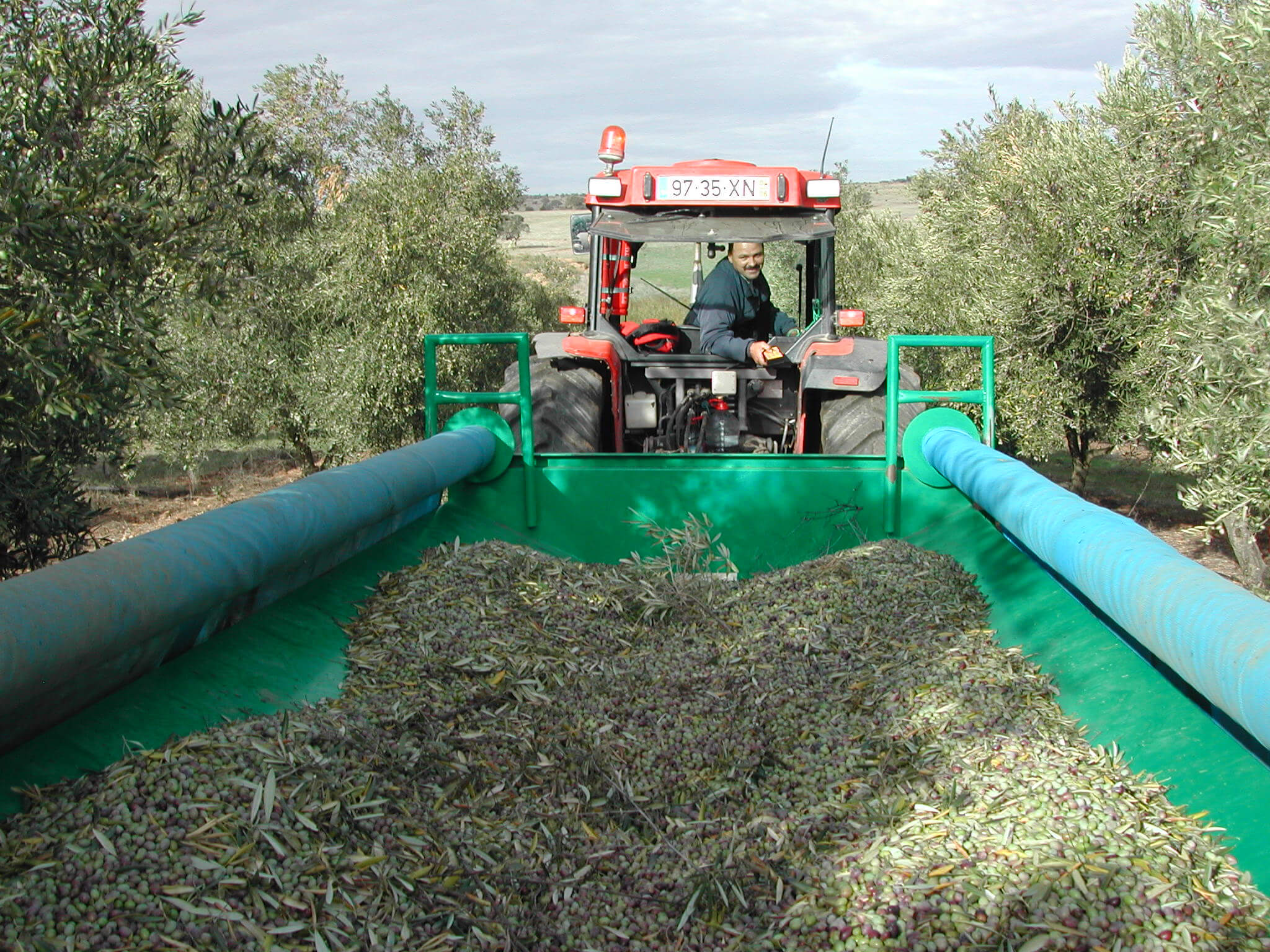 In 2004, Cortes de Cima bottled its first extra-virgin olive oil, which went on to win a gold medal at one of the most prestigious international contests in Los Angeles. For Hans, who worked for 20 years on a Malaysian palm oil plantation, olive oil production is the fulfillment of a natural aspiration. The olives are picked as soon as they begin to take on a black colour. This early harvest is essential for producing a high quality oil with unique features, such as a deep yellow-green colour, herbal aromas and a fresh, slightly spicy flavour.
In 2004, Cortes de Cima bottled its first extra-virgin olive oil, which went on to win a gold medal at one of the most prestigious international contests in Los Angeles. For Hans, who worked for 20 years on a Malaysian palm oil plantation, olive oil production is the fulfillment of a natural aspiration. The olives are picked as soon as they begin to take on a black colour. This early harvest is essential for producing a high quality oil with unique features, such as a deep yellow-green colour, herbal aromas and a fresh, slightly spicy flavour.
Oils pressed from under-ripe fruit are higher in polyphenols and have a low free fatty acid content. However, these benefits come at a price! Green olives from an early harvest yield much less oil – an extraction rate of 10% only, compared to as much as 18% for ripe olives! But no matter, since the goal is to produce the most flavourful oil the Alentejo’s sun and soil can offer. The oil is DOP-certified (denomination of protected origin), the highest quality and authenticity standard. Today, Cortes de Cima’s oil features amongst Quebec’s favourites, and its Chaminé wine is carried by almost all SAQ branches. It is still a family business managed by Hans and Carrie, and while their children, born and raised in the Alentejo region, have fled the nest, they are still very much involved in the company. In fact, you could well meet them during one of their several yearly trips to our country, Canada being one of their main markets. Visit their Facebook page to find out what is happening day to day at the vineyard and when they plan on coming back to Montreal.
